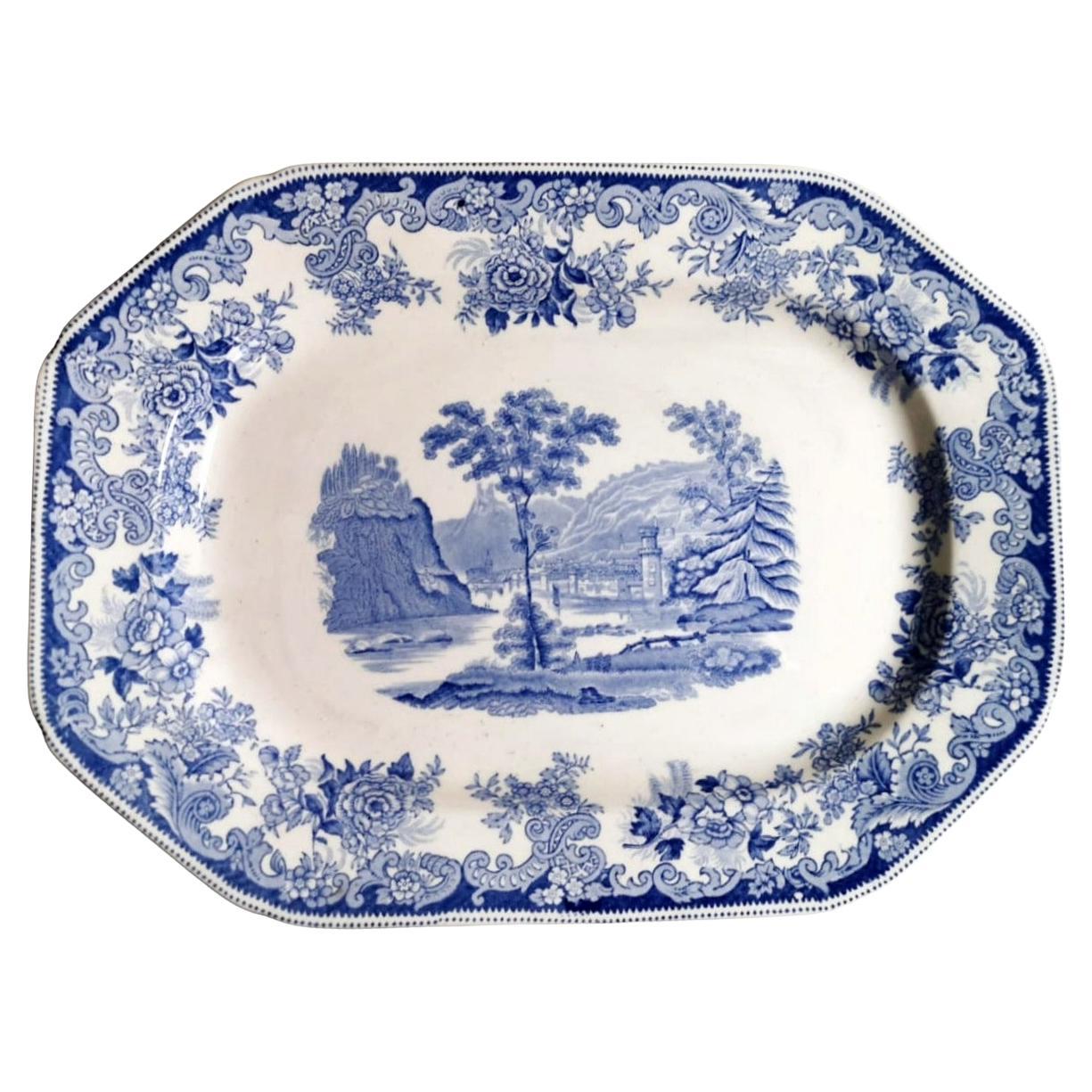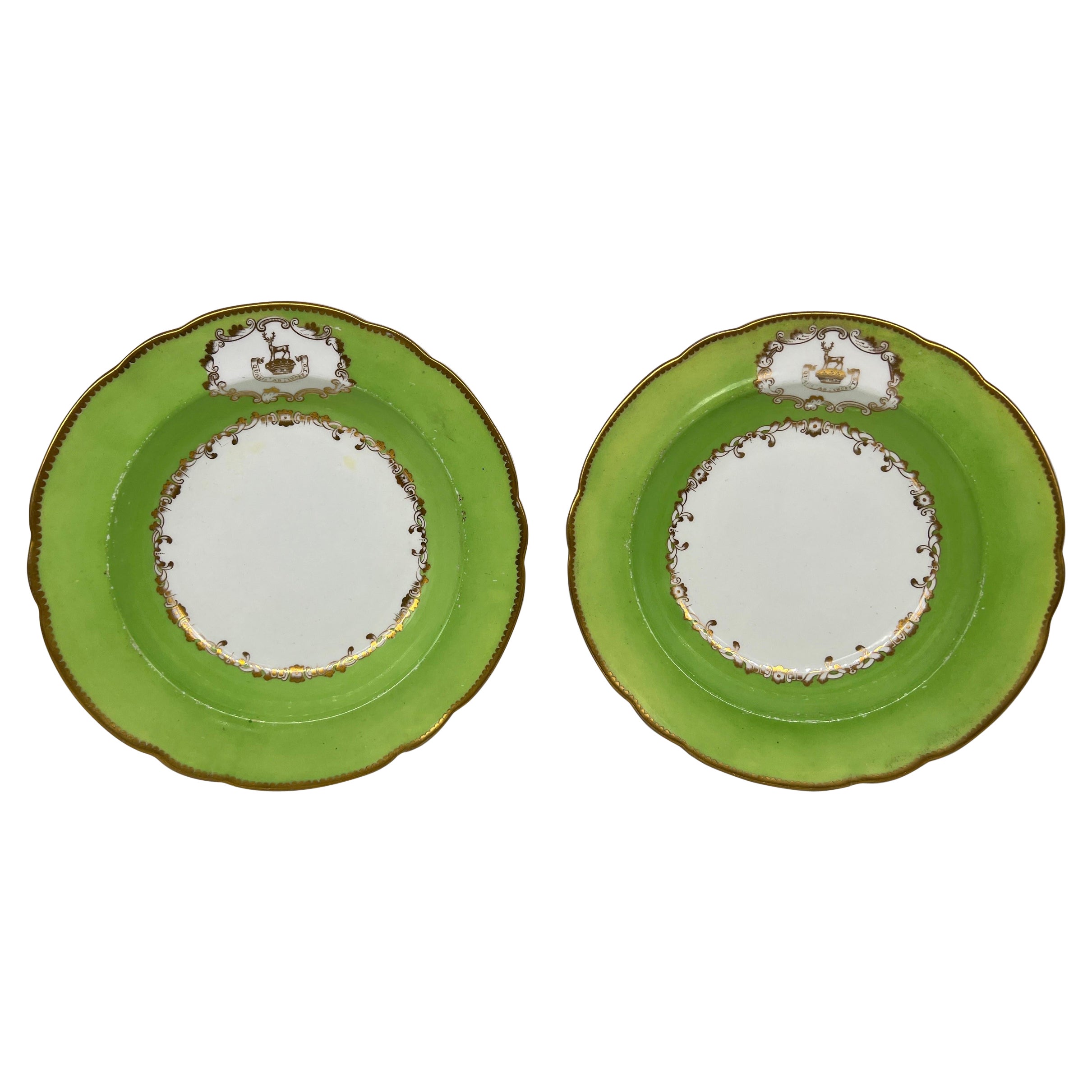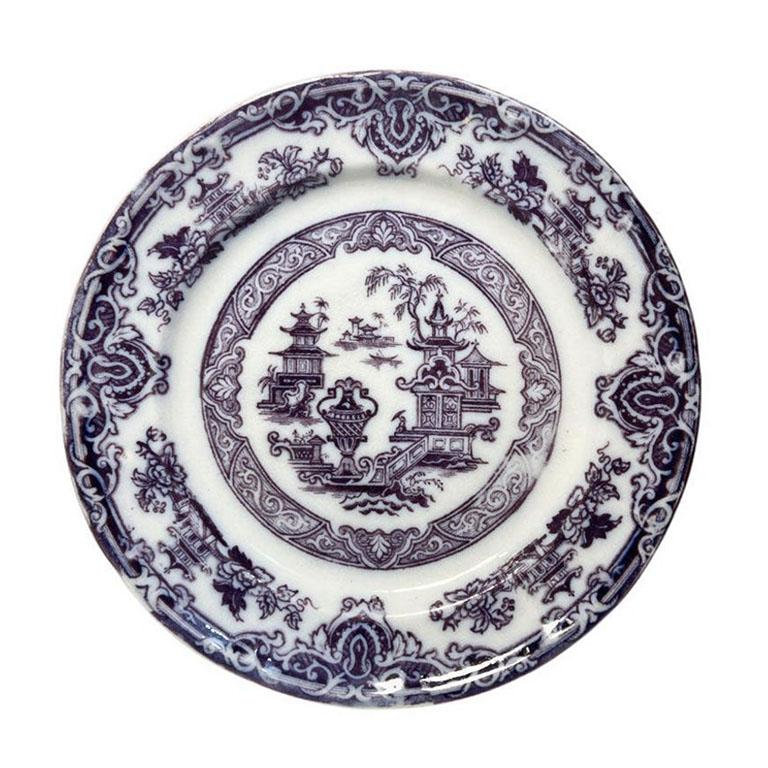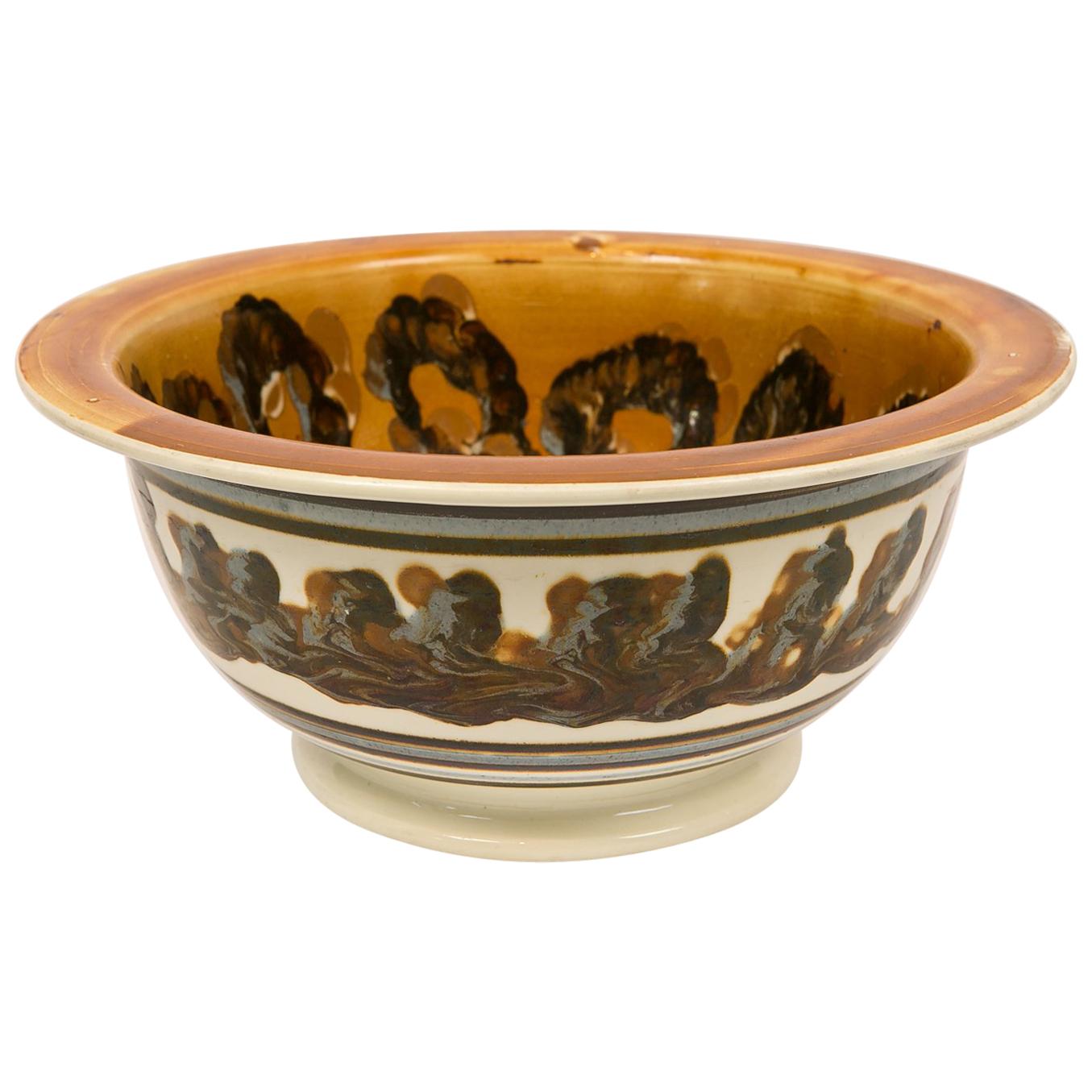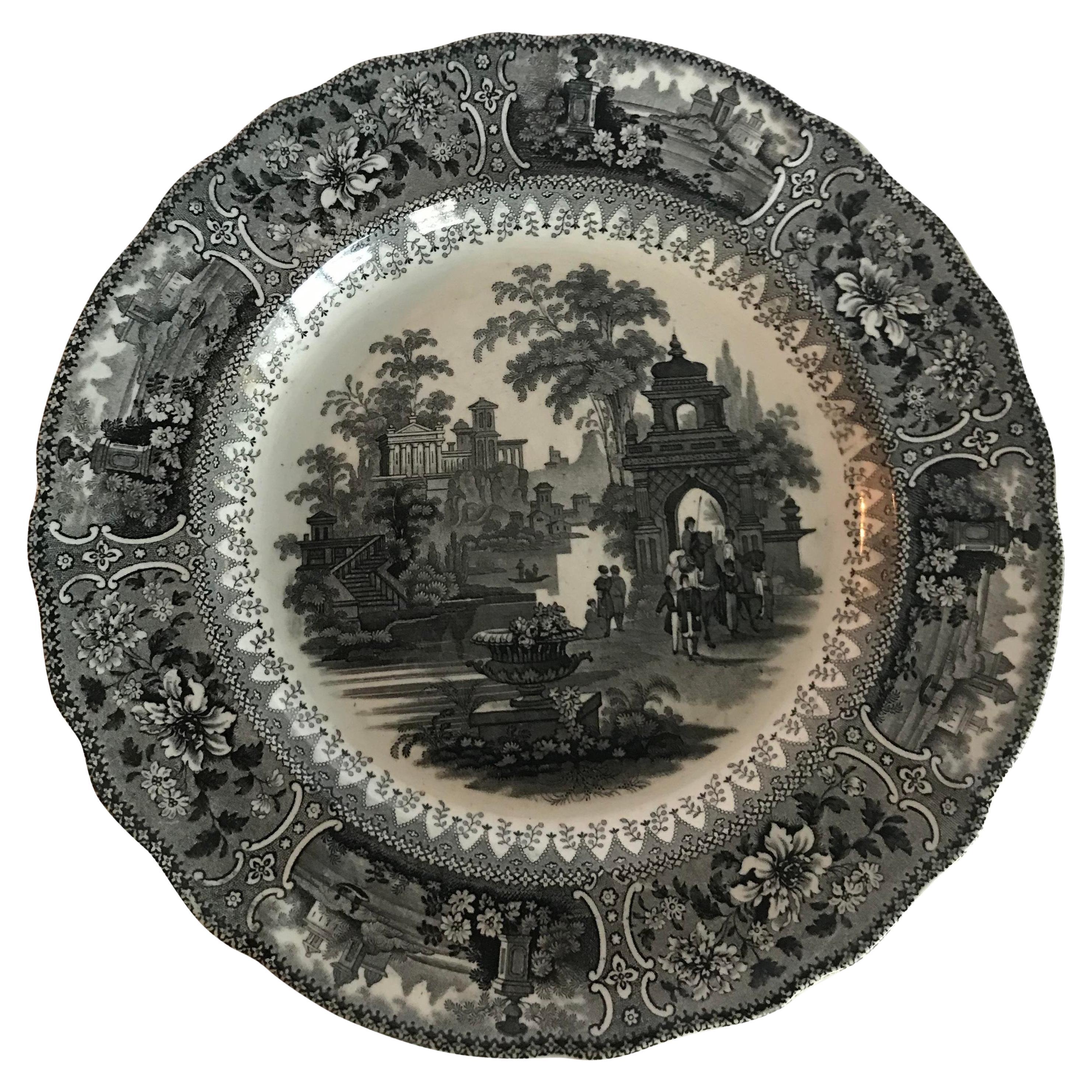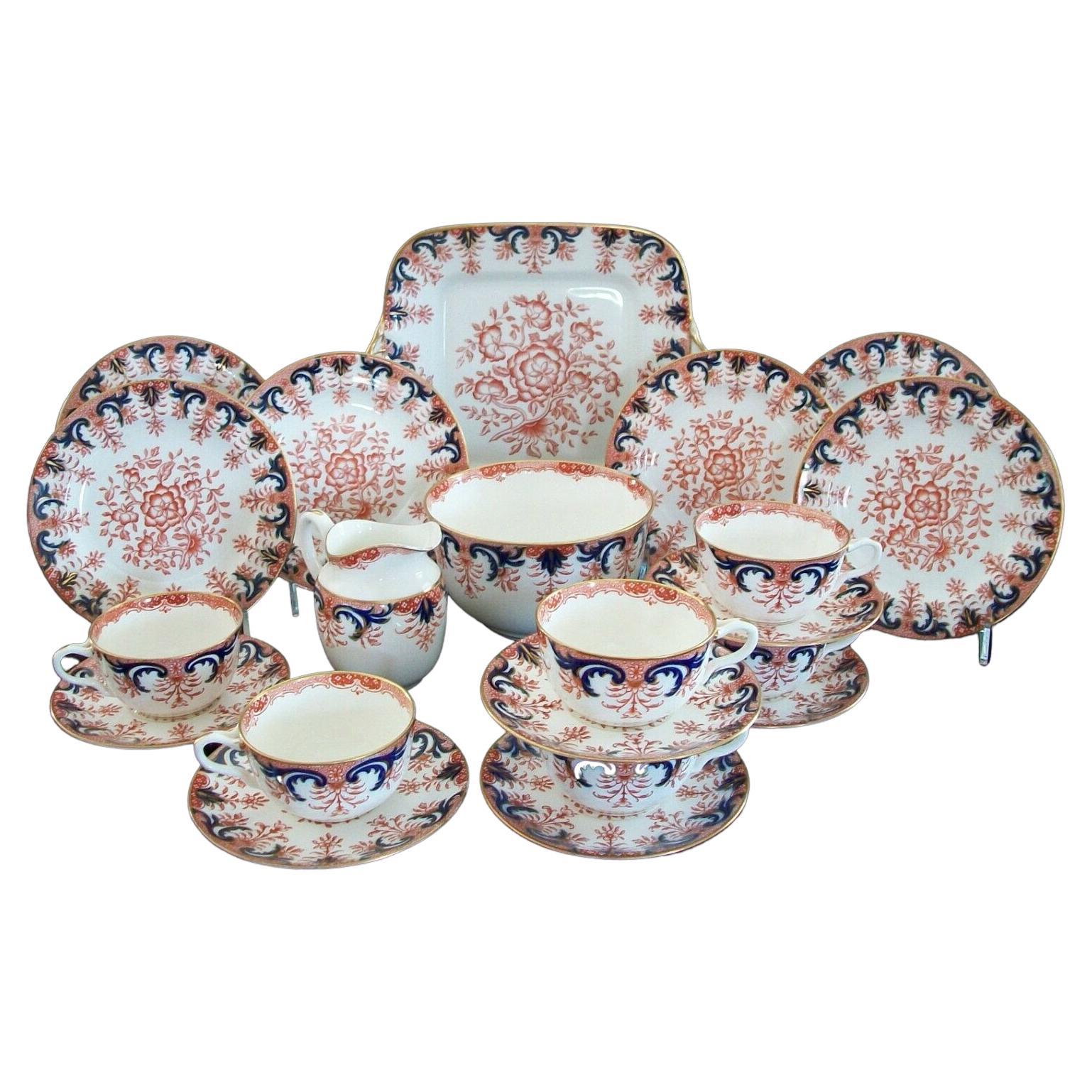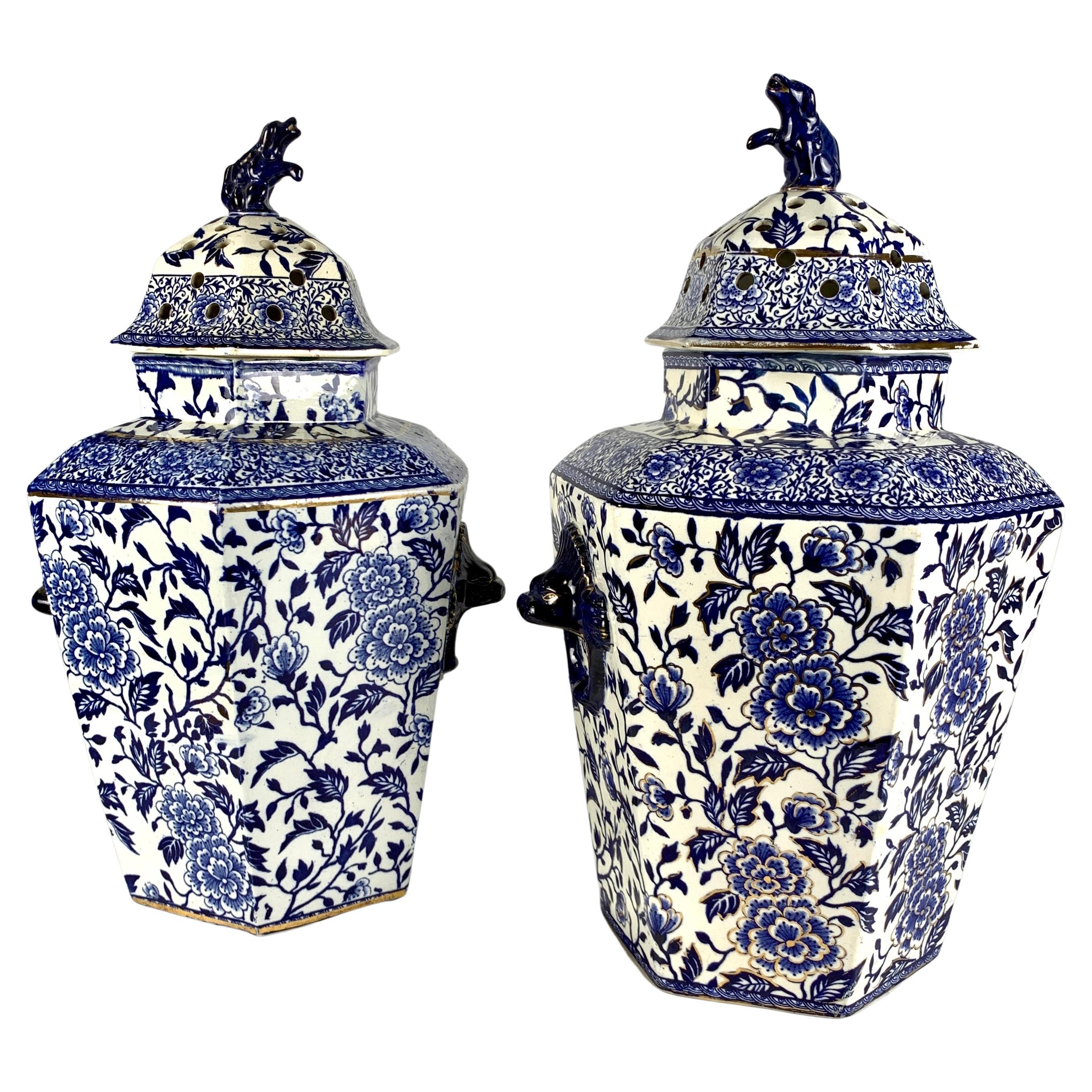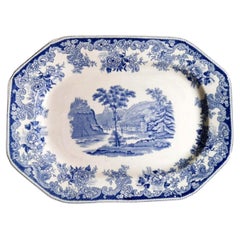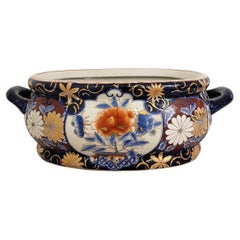
Blue & White Transferware Footbath by Copeland, England, c. 1830
View Similar Items
1 of 9
Blue & White Transferware Footbath by Copeland, England, c. 1830
About the Item
- Creator:Copeland & Garrett Spode (Designer)
- Dimensions:Height: 8 in (20.32 cm)Width: 19 in (48.26 cm)Depth: 12.5 in (31.75 cm)
- Materials and Techniques:
- Place of Origin:
- Period:
- Date of Manufacture:c. 1830
- Condition:Generally Very Good Condition; Old Repair to Handle.
- Seller Location:New York, NY
- Reference Number:Seller: E-109051stDibs: 12070382191284
You May Also Like
- Copeland-Spode English Tray with Blue Transferware DecorationsBy Copeland SpodeLocated in Prato, TuscanyWe kindly suggest you read the whole description, because with it we try to give you detailed technical and historical information to guarantee the authenticity of our objects. Elegant and refined English octagonal ceramic tray; on the white background, soft and rich blue decorations have been executed using the transferware method; in the center we find the poetic and graceful representation of the Severn River and the town of Bridgnorth (the name of this decoration is "Severn"), while the edges of the tray are adorned with sumptuous and spectacular flower and leaf decorations. The Severn River is the longest river in the United Kingdom (350 km), rising in Wales and flowing into the Bristol Channel; Bridgnorth is an ancient Saxon settlement; observing the view of the river and town from his castle at Bridgnorth King Charles I Stuart (1600-1649) said "the most beautiful sight in all my kingdom". On the back of the tray there are 3 imprinted marks including one with final number 14, then we find in the center a blue mark, these indicate to us exactly that the tray was produced in Stoke-on-Trent by the Copeland-Spode company in 1914 (see mark no.1079 p.172 of "Encyclopaedia of British Pottery and Porcelain Mark). The Spode firm was founded in the heart of the Potteries - Stoke-on-Trent by Josiah Spode in 1770. Josiah Spode is most famous for developing the specific design technique that meant underglaze transfers could be printed on earthenware. Later, focusing on porcelain production, Josiah Spode pioneered the development of a new form of porcelain, originally called "Stoke China...Category
Early 20th Century British Victorian Ceramics
MaterialsCeramic
- Mid-Century Chinese Export / Imari Style Blue and White Footbath / PlanterLocated in Kennesaw, GAGreat for gifting or home decor! This is a lovely Chinese Export style footbath. It is hand painted and has gilt accents. Note the interior fish!Category
Mid-20th Century Chinese Chinese Export Ceramics
MaterialsCeramic
- Pair, Copeland & Garrett Ripon Family Armorial Porcelain Soup Bowls C. 1833-1847By Copeland & Garrett SpodeLocated in Atlanta, GAPair, Copeland & Garrett Ripon Family Armorial Porcelain Soup Bowls C. 1833-1847 Each piece features the latin term "Qualis Ab Incepto" which translates to "The Same As From The Beg...Category
Antique Mid-19th Century English Ceramics
MaterialsPorcelain
- Copeland & Garrett (Spode) Stone China Sauce Tureen in pattern 5519, circa 1840By Copeland & Garrett SpodeLocated in Lincoln, LincolnshireThis is a very good sauce tureen made of ironstone (Spode's Stone China) in Pattern No 5519, produced by the English, Copeland & Garrett - Spode factory in the 19th century, Circa 18...Category
Antique Mid-19th Century English Chinoiserie Ceramics
MaterialsIronstone
- Antique Podmore Walker Temple Pearl Stone Ware purple Transferware Plate - 1830By WedgwoodLocated in Oklahoma City, OKA stunning lavender purple chinoiserie transferware salad or bread plate. This piece is over 200 years old and in miraculously good condition. It is in the "Temple" pattern, and the ...Category
Antique Early 19th Century English Victorian Ceramics
MaterialsCeramic, Paint
- Staffordshire Potteries English Tray with Blue Transferware DecorationsBy Clementson BrothersLocated in Prato, TuscanyWe kindly suggest you read the whole description, because with it we try to give you detailed technical and historical information to guarantee the authenticity of our objects. Lovely and refined English oval ceramic tray; elegant and rich blue decorations have been executed on the white background using the transferware method; the mark on the back tells us exactly that the object was produced by the Clementson Brothers LTD Company between 1901 and 1913 at the Phoenix factory in Shelton, the company made a wide range of objects with this decoration called "Delf" ( see mark no.909 p.150 of "Encyclopaedia of British Pottery and Porcelain Mark"). Transferware, which was very fashionable in the Victorian period, refers to glazed and decorated pottery with a specific treatment that they produced in Staffordshire, England; they used copper plates on which the design was engraved, the plate was then inked and the design transferred to a special fabric that was later placed on the pottery (plates, trays, tureens, etc.) which was glazed and fired; the first to use this printing process were John Sadler and Guy Green of Liverpool in 1756. If we look at the pottery made by this method we will notice that the designs are not perfect and often the ink is smudged: this is their characteristic. A hand-painted plate service could afford few English families, with this method even middle-class families could have a decorated plate service. The Clementson Firm was founded in 1839 by Joseph Clementson, who retired from the business in 1867, leaving the factory to his four sons and son...Category
Early 20th Century British Victorian Ceramics
MaterialsCeramic
Recently Viewed
View AllMore Ways To Browse
Blue And White Transferware
Blue White Transferware
Antique Blue And White Transferware
Copeland Spode White
19c Jardinieres
Spode Transferware
Copeland And Garrett
Antique Footbath
Blue And White Footbaths
Spode Footbath
Majolica Match
Ceramic Fruit And Vegetables
Antique Canton Plates
Imari Charger Plates
Ceramica Gatti 1928
Chinese Porcelain Spoons
Vintage Turkish Pottery
Wedgwood Biscuit
